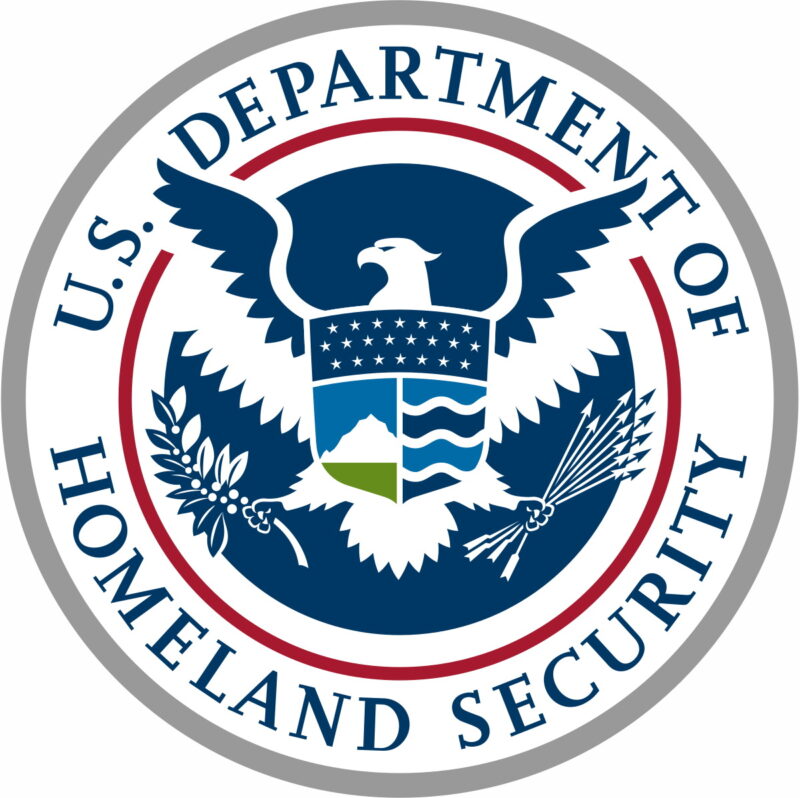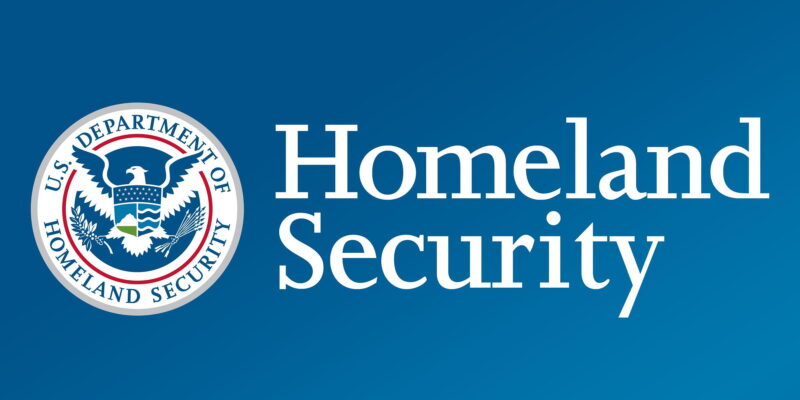 Issued: August 13, 2021, 2:00 p.m.
Issued: August 13, 2021, 2:00 p.m.
Expires: November 11, 2021, 2:00 p.m.
The Secretary of Homeland Security has issued a new National Terrorism Advisory System (NTAS) Bulletin regarding the current heightened threat environment across the United States. The Homeland continues to face a diverse and challenging threat environment leading up to and following the 20th Anniversary of the September 11, 2001 attacks as well religious holidays we assess could serve as a catalyst for acts of targeted violence.
These threats include those posed by domestic terrorists, individuals and groups engaged in grievance-based violence, and those inspired or motivated by foreign terrorists and other malign foreign influences. These actors are increasingly exploiting online forums to influence and spread violent extremist narratives and promote violent activity. Such threats are also exacerbated by impacts of the ongoing global pandemic, including grievances over public health safety measures and perceived government restrictions.
- Through the remainder of 2021, racially- or ethnically-motivated violent extremists (RMVEs) and anti-government/anti-authority violent extremists will remain a national threat priority for the United States. These extremists may seek to exploit the emergence of COVID-19 variants by viewing the potential re-establishment of public health restrictions across the United States as a rationale to conduct attacks. Pandemic-related stressors have contributed to increased societal strains and tensions, driving several plots by domestic violent extremists, and they may contribute to more violence this year.
- Additionally, leading up to the anniversary of the 9/11 attacks, Al-Qa’ida in the Arabian Peninsula recently released its first English-language copy of Inspire magazine in over four years, which demonstrates that foreign terrorist organizations continue efforts to inspire U.S.-based individuals susceptible to violent extremist influences.
- Historically, mass-casualty domestic violent extremist attacks linked to RMVEs have targeted houses of worship and crowded commercial facilities or gatherings. Some RMVEs advocate via online platforms for a race war and have stated that civil disorder provides opportunities to engage in violence in furtherance of ideological objectives. The reopening of institutions, including schools, as well as several dates of religious significance over the next few months, could also provide increased targets of opportunity for violence though there are currently no credible or imminent threats identified to these locations.
- Foreign and domestic threat actors, to include foreign intelligence services, international terrorist groups and domestic violent extremists, continue to introduce, amplify, and disseminate narratives online that promote violence, and have called for violence against elected officials, political representatives, government facilities, law enforcement, religious communities or commercial facilities, and perceived ideologically-opposed individuals. There are also continued, non-specific calls for violence on multiple online platforms associated with DVE ideologies or conspiracy theories on perceived election fraud and alleged reinstatement, and responses to anticipated restrictions relating to the increasing COVID cases.
- Ideologically motivated violent extremists fueled by personal grievances and extremist ideological beliefs continue to derive inspiration and obtain operational guidance through the consumption of information shared in certain online communities. This includes information regarding the use of improvised explosive devices and small arms.
- Violent extremists may use particular messaging platforms or techniques to obscure operational indicators that provide specific warning of a pending act of violence.
- Law enforcement have expressed concerns that the broader sharing of false narratives and conspiracy theories will gain traction in mainstream environments, resulting in individuals or small groups embracing violent tactics to achieve their desired objectives. With a diverse array of threats, DHS is concerned that increased outbreaks of violence in some locations, as well as targeted attacks against law enforcement, may strain local resources.
- Nation-state adversaries have increased efforts to sow discord. For example, Russian, Chinese and Iranian government-linked media outlets have repeatedly amplified conspiracy theories concerning the origins of COVID-19 and effectiveness of vaccines; in some cases, amplifying calls for violence targeting persons of Asian descent.
How We Are Responding
- DHS will continue to identify and evaluate calls for violence, including online activity associated with the spread of disinformation, conspiracy theories, and false narratives, by known or suspected threat actors and provide updated information, as necessary.
- DHS continues to encourage the public to maintain awareness of the evolving threat environment and report suspicious activity.
- DHS is coordinating with state and local law enforcement and public safety partners to maintain situational awareness of potential violence in their jurisdictions and maintain open lines of communication with federal partners.
- DHS is also advancing authoritative sources of information to debunk and, when possible, preempt false narratives and intentional disinformation, and providing educational materials to promote resilience to the risks associated with interacting with and spreading disinformation, conspiracy theories and false narratives.
- More broadly, DHS remains committed to identifying and preventing terrorism and targeted violence while protecting the privacy, civil rights, and civil liberties of all persons.
How You Can Help
- Report suspicious activity and threats of violence, including online threats, to local law enforcement, FBI Field Offices, or local Fusion Center.
- If you know someone who is struggling with mental health issues or may be a danger to themselves or others, support is available.
Be Prepared and Stay Informed
- Be prepared for emergency situations and remain aware of circumstances that may place you at risk.
- Maintain digital media literacy to recognize and build resilience to false and harmful narratives.
- Make note of your surroundings and the nearest security personnel.
- Government agencies will provide details about emerging threats as information is identified. The public is encouraged to listen to local authorities and public safety officials.
Full press release below:
On August 13, 2021 the Secretary of Homeland Security, Alejandro N. Mayorkas, issued a new National Terrorism Advisory System (NTAS) Bulletin regarding the heightened threat environment across the United States. The threat environment to the Homeland is diverse and challenging, especially leading up to and following the 20th Anniversary of the September 11, 2001 terror attacks as well as religious holidays that could serve as catalyst for targeted violence.
Threats in the Homeland include those posed by domestic terrorists, individuals and groups engaged in grievance-based violence, and those inspired or motivated by foreign terrorists and other malign foreign influences. These actors are increasingly exploiting online forums to influence and spread violent extremist narratives and promote violent activity. This Bulletin builds on Bulletins issued in January and May by the Department of Homeland Security (DHS) and provides more information about the threat landscape we face for the coming months.
“DHS remains committed to sharing timely information with the public about the heightened threat environment in order to protect communities across our country,” said Secretary Mayorkas. “Today’s NTAS Bulletin advises the public about the heightened threat landscape we face and how DHS is working with our partners, at every level of government and in the community, to combat domestic terrorism and targeted violence in all its forms. We are committed to ensuring every initiative undertaken by DHS in response to the threat is consistent with privacy protections, civil rights and civil liberties, First Amendment-protected rights, and other applicable laws.”
DHS and the Federal Bureau of Investigation (FBI) will continue its close coordinating with state, local, tribal, and territorial law enforcement and public safety partners to ensure situational awareness of potential violence in their jurisdictions and will maintain open lines of communication with federal partners. DHS encourages the public to remain aware of the evolving threat environment and report suspicious activity to law enforcement officials.
Under the Biden-Harris Administration, DHS has increased the development, production, and dissemination of intelligence and other actionable information central to countering threats in the current environment. DHS has established a new, dedicated domestic terrorism branch within the Department’s Office of Intelligence and Analysis (I&A). Further, DHS has established the Center for Prevention Programs and Partnerships (CP3) to help build local prevention frameworks to provide communities with the tools they need to counter terrorism and other targeted violence.
In February, Secretary Mayorkas designated combating domestic violent extremism as a National Priority Area for the first time in FEMA grant programs. As a result, state, local, tribal, and territorial governments are required to spend at least 7.5 percent, or a minimum of $77 million, of their DHS grant awards toward combating this threat.
These initiatives are taken in concert with the Biden-Harris Administration’s National Domestic Terrorism Strategy which highlights the whole-of-government approach being take to enhance the analysis and distribution of actionable intelligence to stakeholders; prevent domestic terrorism recruitment and the mobilization to violence; disrupt and deter domestic terrorism activity; and confront long-term contributors to domestic terrorism.



